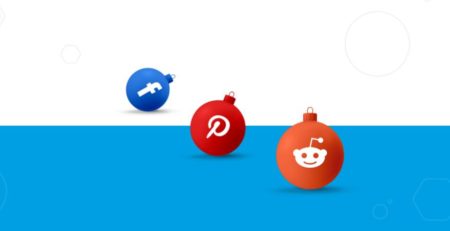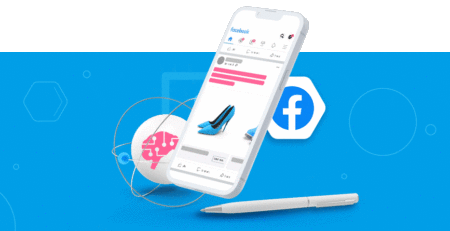Your ultimate guide to lead generation using paid media
What’s the point in growing website traffic organically or even paying for it when your visitors bounce after browsing it for a few minutes? They might even think of buying something from you, but then they just want to check other options before making a purchasing decision… and never return.
If only you had a way to capture these people’s contact details, you could already drive them into your marketing funnel and turn them into loyal customers.
Sound good? You can easily achieve that with well-crafted paid campaigns. Here’s how.
Your go-to guide to generating leads with paid media
Amidst all the noise, it can take months before you start driving traffic to your website due to SEO and content marketing efforts. It’ll take another few months to generate the first quality leads organically.
While building organic traffic is crucial for your long-term strategy, paid media is the best way to gain traction and ramp up your sales pipeline fast.
Let’s go through nine simple steps that you need to follow to gain leads that will later turn into your paying customers.
Step 1: Understand your business goals
The key to campaign success is in clearly defined goals.
‘Easy. Our goal is lead generation,’ you might say. Yes. But no.
To generate quality leads, you should understand how the whole campaign will help you come closer to your business goal, which is a conversion. Having a clear idea of why you need leads and how you’re going to nurture them, you’ll be able to create more targeted ad campaigns.
And this all is possible only when you understand your business goals. So, before you define the campaign budget and come up with engaging ideas for lead magnets, answer the following questions:
- Why do I need leads?
- How is this campaign aligned with the goals of the company sales team?
- Can I get any useful information from the sales team to boost lead generation?
- What are the next steps to turn the leads into customers?
The answers to these questions will point you in the right direction towards building a successful lead generation campaign.
Step 2: Set SMART goals
When you determine how this advertising campaign fits into your bigger game plan, you can set campaign objectives.
‘Again, isn’t lead generation our campaign objective?’ Again, yes. But no.
Instead of setting an abstract goal, try to be as specific as possible. This is where you’ll need the SMART acronym.
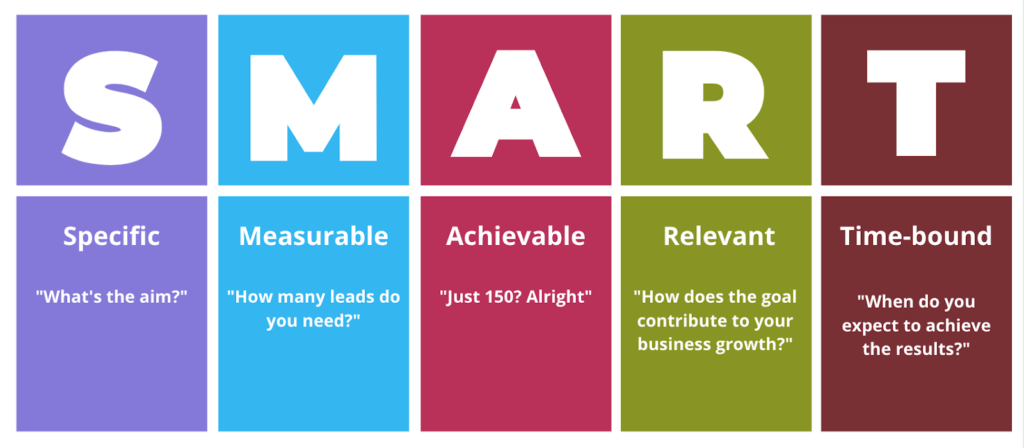
SMART stands for specific, measurable, achievable, relevant, and time-bound. Each word is a criterion that describes your campaign objective. For instance, your SMART might be ‘I want to generate 150 leads for a budget of $3,000 to drive them further down the sales funnel with an email marketing campaign.’
Note: As you’re going to run a paid campaign with a specific budget, it’s better to replace the time deadline with the amount of money that you’d need to achieve your goals.
Every time you define goals for a new campaign, use this acronym to make sure you’re specific enough about what you want to accomplish.
Step 3: Calculate the campaign budget
You can’t estimate how much every lead will cost you, to the penny. But to ensure your campaigns are cost-effective, you need to set a goal CPL (cost-per-lead), which is a tricky part.
The simplified formula for estimated the goal CPL would be:
CPL = CAC (cost-per-acquisition) * CVR (the percentage of leads that will turn into paying customers).
The resulting number won’t be very precise, and you’ll need to adjust your goal CPL once you collect the first pieces of data when the campaign is up and running.
Based on the goal CPL, you can easily estimate the approximate campaign budget and decide whether you can afford it. However, to get more accurate estimates, you need way more benchmark data, including the average CPC, landing page CVR, lead quality (%), etc.
Note: If you have a limited budget, you can specify it first and then calculate the number of leads that you might get for the goal CPL.
Step 4: Define the target audience
To gain qualified leads, promoting an engaging lead magnet isn’t enough. If your campaign content appeals to broad audiences, the leads that you get will have no value for your company.
To avoid this, you need to have a clear understanding of your audience. Typically, target audiences are dictated by several parameters, like:
- Age
- Gender
- Location
- Interests
- User behavior (for retargeting campaigns)
One campaign = one audience segment. You might want to test how your content performs for different audiences, and it’s always better to launch separate campaigns for this purpose.
Defining your targeting strategy will be easier after you answer the following questions:
- Is your audience more active on any specific social media? The answer to this question will often depend on your customers’ age and gender.
- Does it make sense to split your campaigns by location?
- Do you need to translate campaign content into the languages of the countries you’re targeting?
- Do you want to run retargeting campaigns? Retargeting people who bounced from your site previously is an effective practice within lead generation campaigns.
- Does it make sense to target people by interests or go for a broader target audience?
Based on all the above, you’ll have a better idea of how you can reach your prospects at different stages of their buyer journey (e.g. while location-based targeting works well at the awareness stage, retargeting fits the consideration stage the best) and build stronger campaigns.
Step 5: Pick a channel(s)
Where can you reach your target audience? The advertising platform of your choice will highly depend on your goal CPL, overall campaign budget, and your target audience.
While channels like Facebook or Google allow you to put your ads in front of the largest audience, many advertisers are looking for less competitive and expensive environments today.
Go beyond traditional advertising channels
There are tons of platforms where your audience may be more active and involved than they are on the duopoly.
B2B companies should pay attention to Twitter, Quora, and Reddit. For B2C brands, Pinterest and native advertising may drive exceptional results. Such channels allow your advertising campaigns to reach the right audiences without overpaying.
Step 6: Create lead magnets
Finally, it’s time to work on lead magnets that you’ll use to encourage people to share their contact details with you. In our experience, the following lead magnets have proved the most effective:
- Ebooks
- Reports
- Virtual events
- Templates
Ebooks
Long-form guides to the subject is a great way to get leads and drive them further down the funnel by educating them.

Reports
Reports with insightful infographics are extremely popular among B2B companies. You don’t even need to do the research yourself (but it would be great if you could), but just pull together data from different sources into one downloadable PDF.
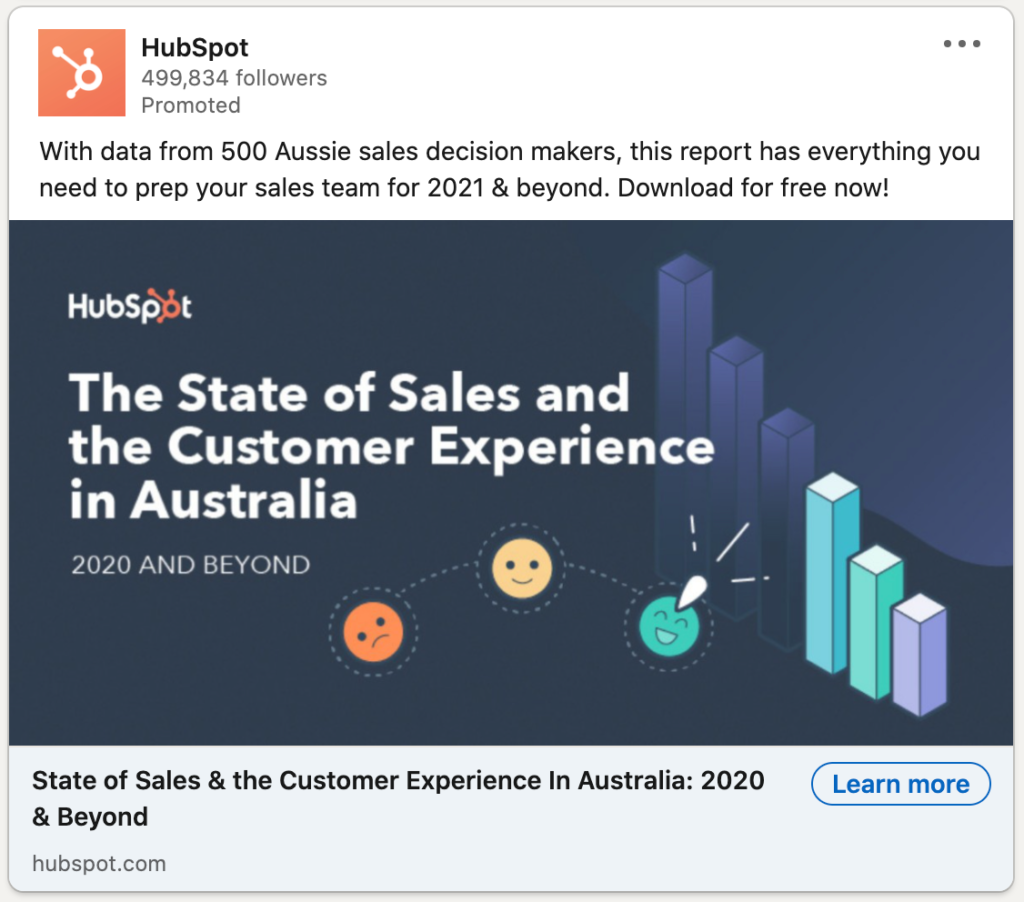
Virtual events
Webinars, conferences, live Q&As, and other virtual event formats will not only bring you high-quality leads but also contribute to your brand reputation.
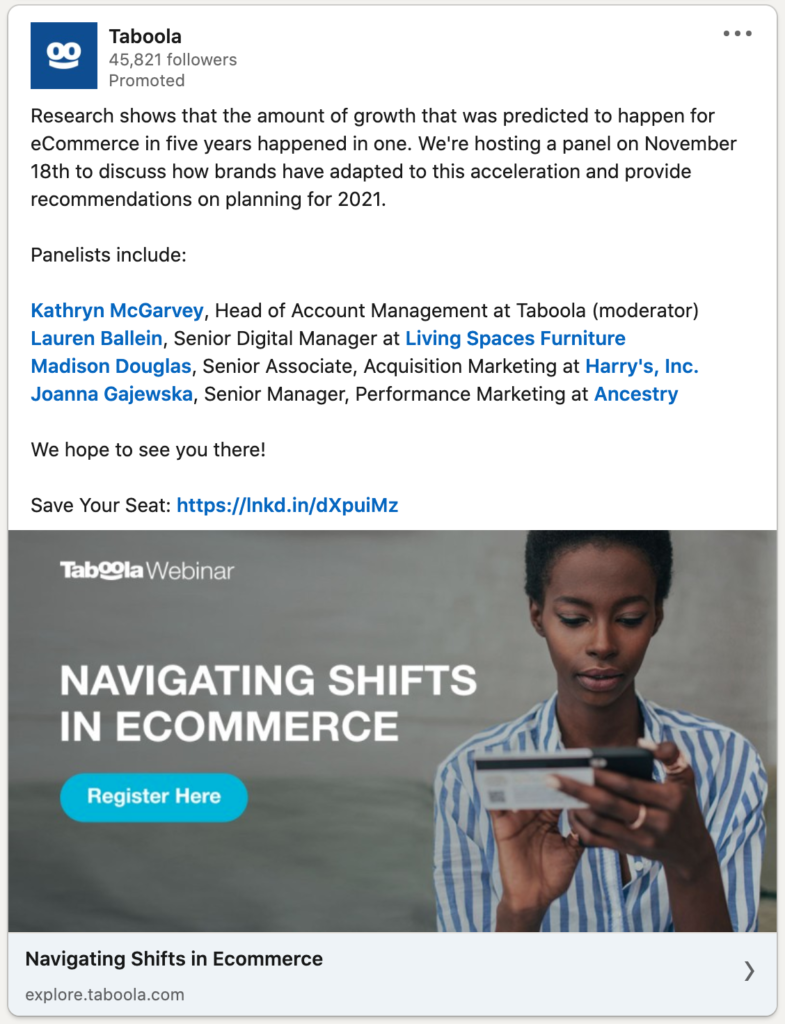
Templates
Compared to ebooks and reports, the creation of a downloadable template doesn’t take much time. All you need to do is to create an outline where users will just fill in based on their needs.

Step 7: Design sweet, uncluttered landing pages
In the next section, we’ll stress the importance of captivating ad titles and images that get people to click, but you don’t want to pay for clicks that don’t contribute to your campaign results, do you?
The way your landing page is built may affect your audience behavior a lot. They don’t have much time to figure out what’s there in your offer if it’s not clear enough at first sight.
Here are six proven best practices that you should follow to improve your landing page conversion rate:
- Place the title before your header image
- Your landing page should include multiple eye-catching section headers
- Use a white background and black text on the page
- Make sure any in-line links open in a new tab
- Avoid right-rail CTAs and bottom-of-the-page banners
- Always match your landing page headline with the ad title
Of course, it’s not only the creativity that’s needed to build a well-stacked landing page. It’s also a functional landing page builder. We recommend that you create at least a few versions of the landing page that you’d use to promote your lead magnet. To save your time and budget, you’d better use a quality drag-and-drop builder that gives you access to all the essential features.
Step 8: Develop captivating ad creatives
Creating ads that drive as many clicks as possible but also attract only the most relevant visitors is art.
These tips will help you craft compelling ads that convert:
- Define your offering and its benefit in the headline.
- Use clear and simple language. Users shouldn’t have problems with understanding what you want to say.
- Reduce the word count. It takes about a second for people to see and cognitively recognize ads. To ensure your ad catches your prospects’ eyes, keep your text short and concise.
- Include a form within the ad itself if possible. On Facebook and LinkedIn, advertisers are allowed to add forms directly within ads, which means that users won’t need to leave the page they’re on to become leads.
- Add a CTA to the ad headline.
Start with creating 6-12 ads per campaign and pick a few winners after several days of driving conversions and collecting data.
You might want to test the following variables within your ads:
- Headlines with numbers and without them
- Detailed descriptions and intrigue
- Emotional appeals and facts
- Headlines with CTAs and without them
- Photos and illustrations
Step 9: Keep optimizing
It’s likely that your very first campaign won’t meet your CPL goal, and leads will cost you way more than you initially planned.
We recommend that you review campaign performance daily to identify and address arising issues promptly. Don’t hesitate to pause underperforming ads and increase your budget for the most successful ones.
The final goal of your lead generation campaign is to bring in prospects who will move through your sales funnel and turn into paying customers. Keep this in mind when defining your target audience, selecting an advertising channel, and crafting lead magnets and ad creatives.
About the author
Adelina Karpenkova is a content marketer at Joinative, a native advertising agency and SaaS. She is responsible for building marketing partnerships, establishing content collaborations, and developing actionable resources for advertisers. Connect with her on Twitter or LinkedIn.




